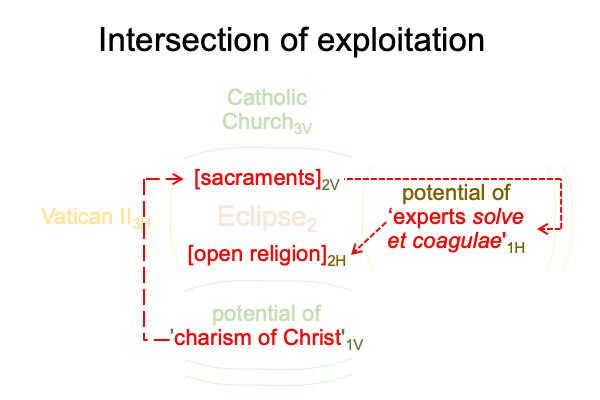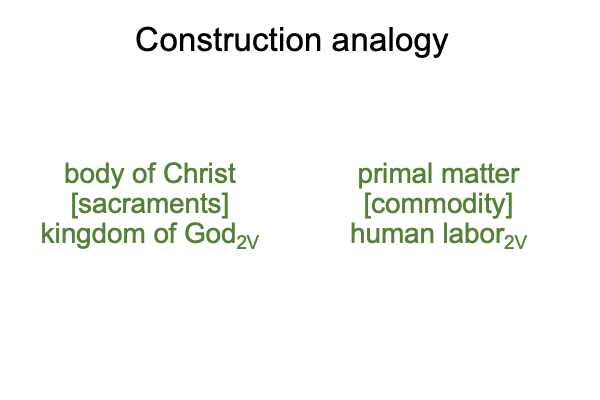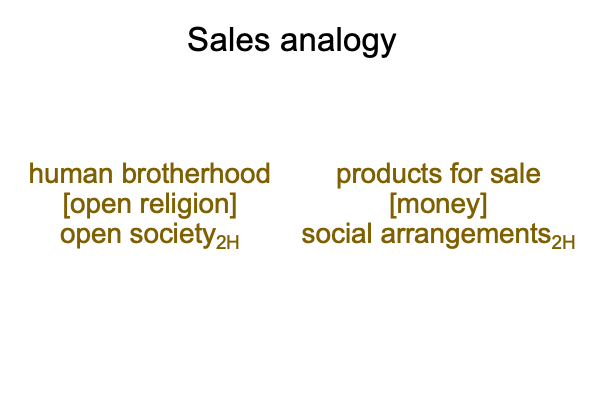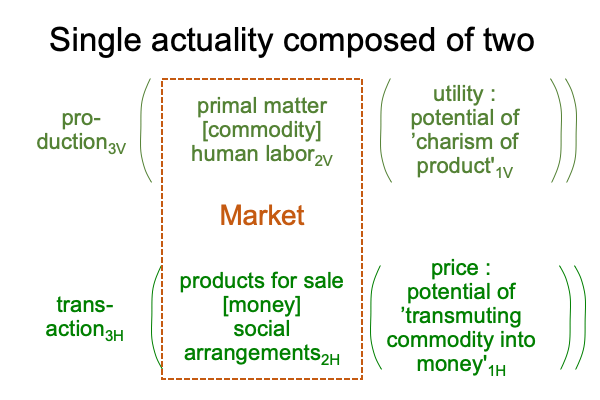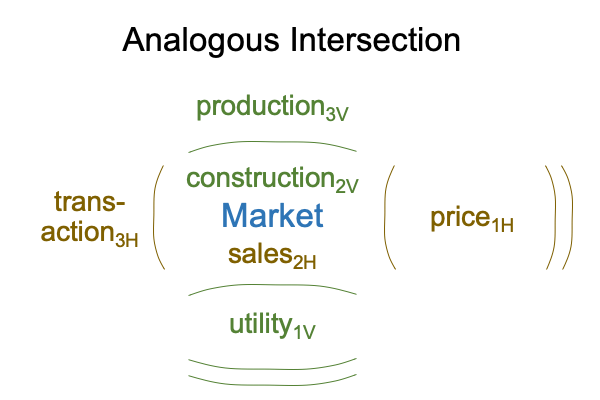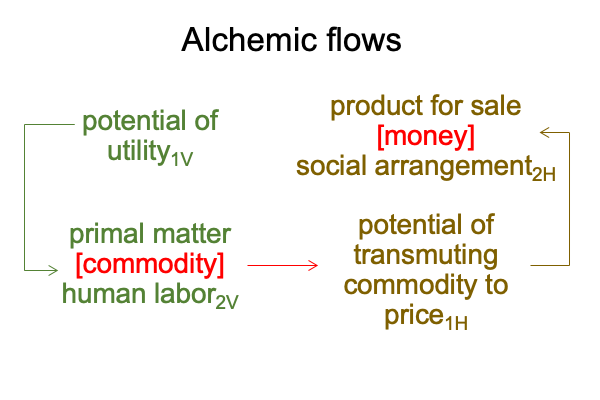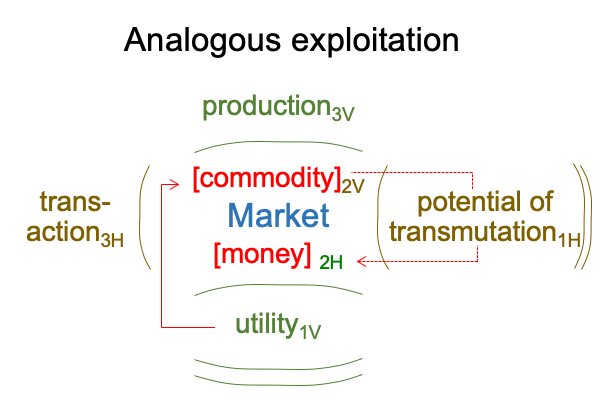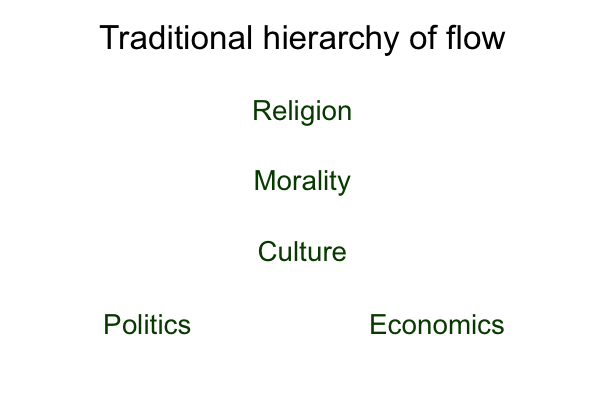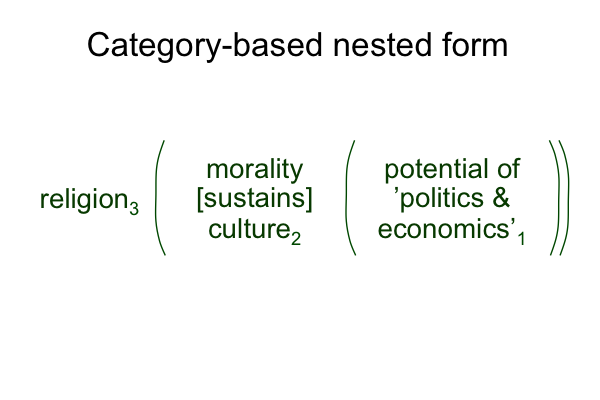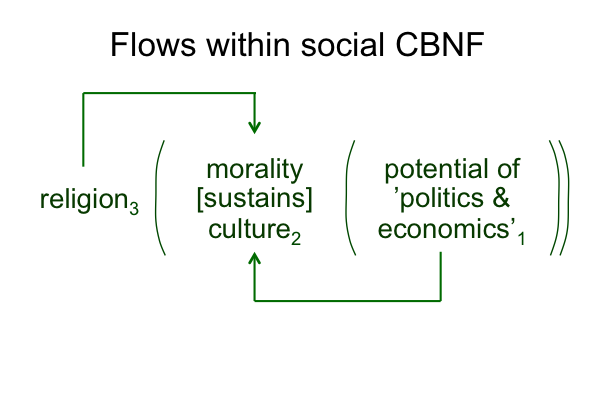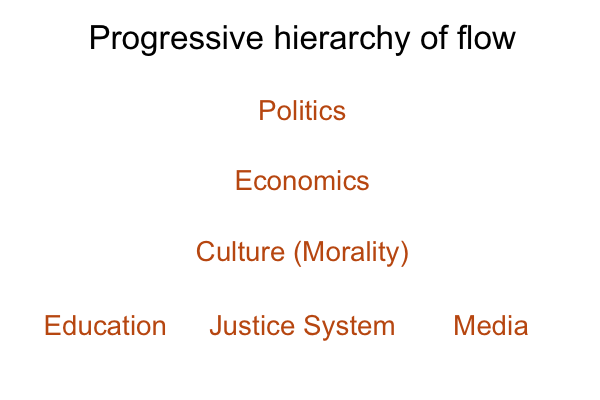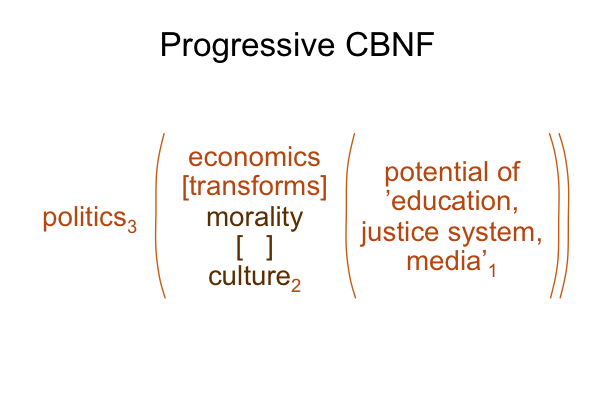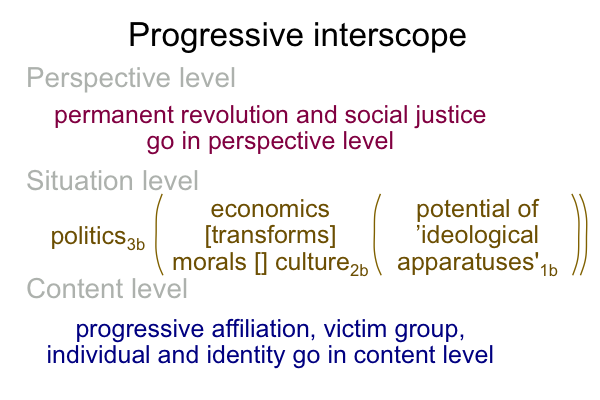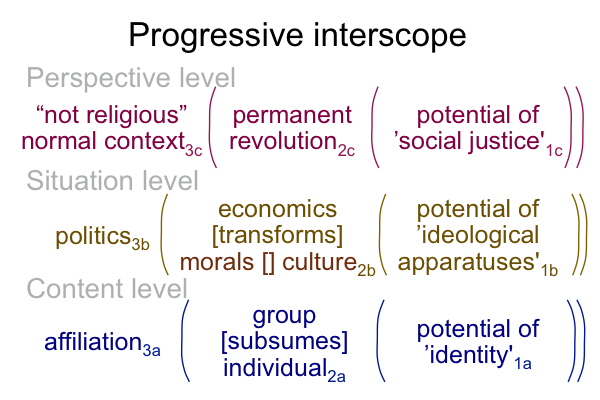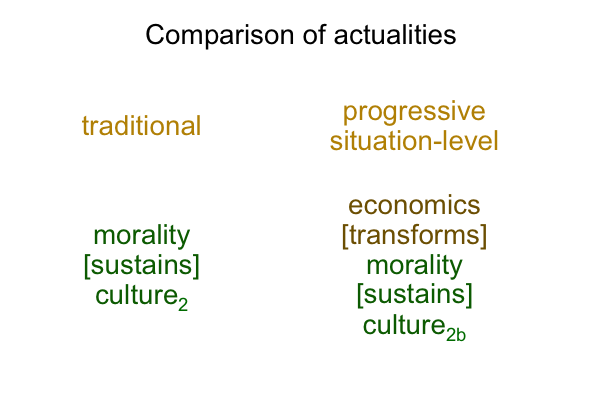Looking at Carlo Vigano’s Speech (2021) “How the Revolution of Vatican II Serves the New World Order” (Part 11 of 14)
0070 At this point, there are two arrangements, a two-level interscope and an intersection. The interscope depicts an alchemic flow. The intersection depicts an eclipse2, a single actuality involving two celestial bodies, where one body occludes the light of the other.
0071 From the modernist point of view, the two-level interscope operates. Vatican II is triumphant. Modernist experts are empowered to alchemically isolate the substance of the sacraments, dissolve it, and then coagulate it as an open religion, on par with all the other religions of the world. The Catholic Church3a aligns with Vatican II3b, through the ministrations of experts.
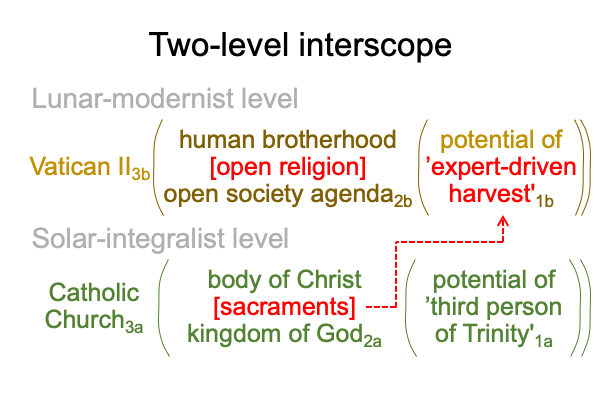
0072 From the integralist point of view, the intersection operates. According to Vigano, Vatican II3H is one normal context and the Catholic Church3V is another. Typically, normal contexts exhibit the logics of exclusion, alignment and complement. Here, the two nested forms cannot complete their logical destinies, because their actualities consolidate into a single actuality. So, the two actualities cannot be the same, but they are stuck together.
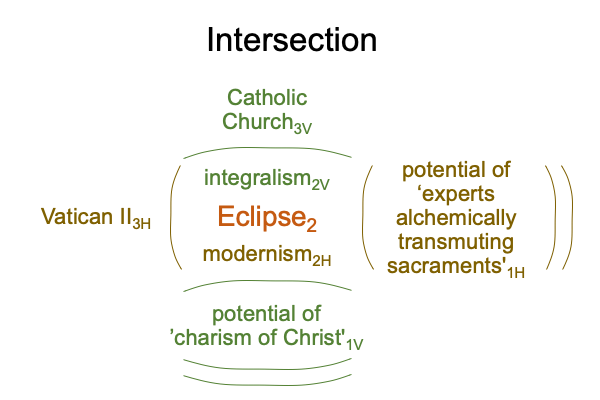
0073 Is the integralist eclipse2 on its way to an alignment of two nested forms?
The modern experts want it so.
But, there is a problem.
Vatican II3H has not, and cannot, complete the task of reconciling the two actualities of intergralism2V and modernism2H, and bringing them into alignment.
But maybe, that is not the end game.
Perhaps, the end game is much more cruel.
0074 Why?
The charism of Christ1V is the potential that underlies the contiguity between the body of Christ2V and the kingdom of God2V.
The potential of experts1H dissolves the credibility (tradition and authority) of the sacraments and alchemically coagulates an open religion, redefining the body of Christ2V as the human brotherhood2H and reformulating the kingdom of God2V as the open society2H.
0075 In the eclipse2, the horizontal potential1H exploits the substance generated by the vertical potential1V.
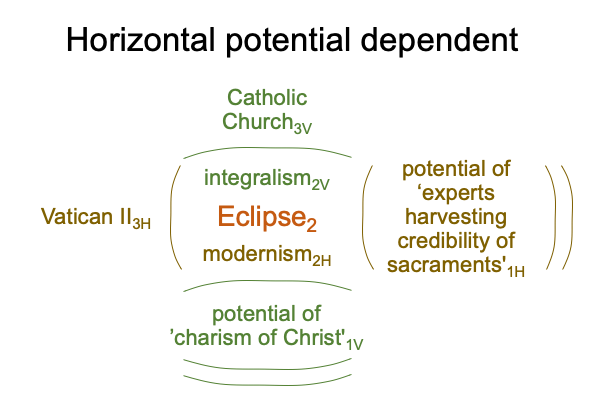
Why does the two-level interscope fail?
The moment that the sacraments cannot be dissolved and reformulated into the lingo of human brotherhood2b and open society2b, the substance of the open religion can no longer feed of its host.
Why is the interscope cruel?
The potential of the Third Person of the Trinity1a cannot be virtually situated by experts harvesting material precipitates1bof sacred sacraments2a and making the coagulate open for all to share2b. But, it can be exploited.
0076 In section ten, Vigano suggests that maybe Catholics should just… let go… of this strange monstrosity.
Let go of the exploitation.
0077 Indeed, the eclipse2 is a strange configuration, since the historic Church stands with the Virgin Mary upon the moon and is clothed in the garments of righteousness and the open religion, which is what “we” want the church to be(according to Fratelli Tutti), stands in the umbra of the moon, along with the other “open” religions of the world.
I wonder whether there are alternate analogies.

